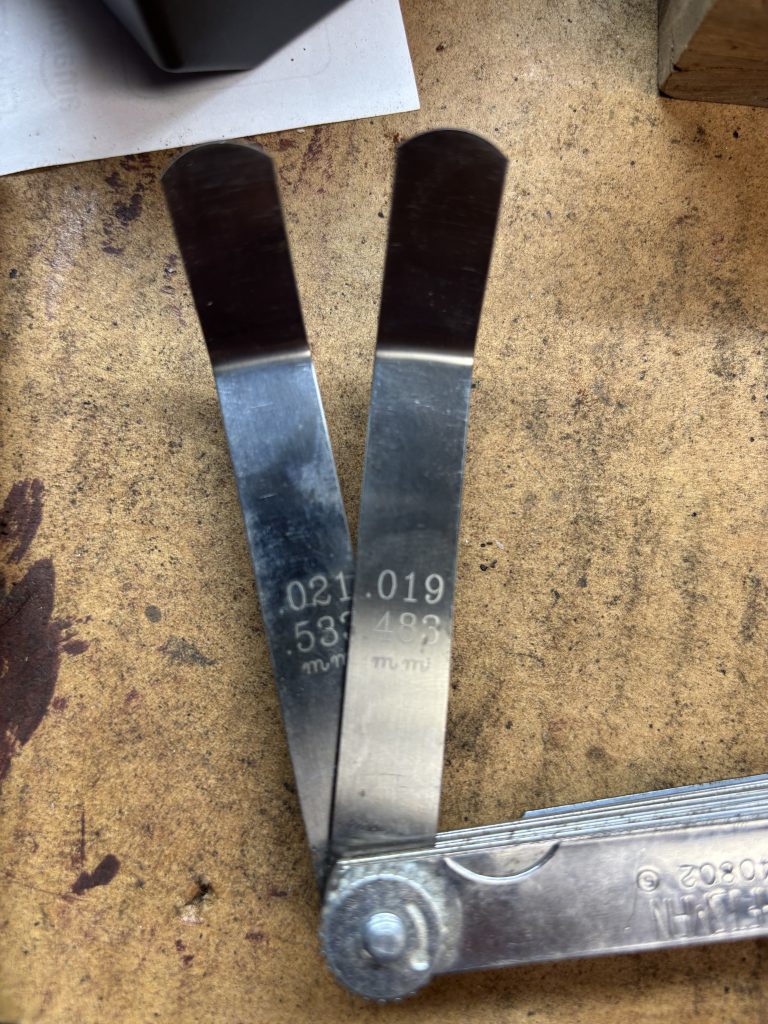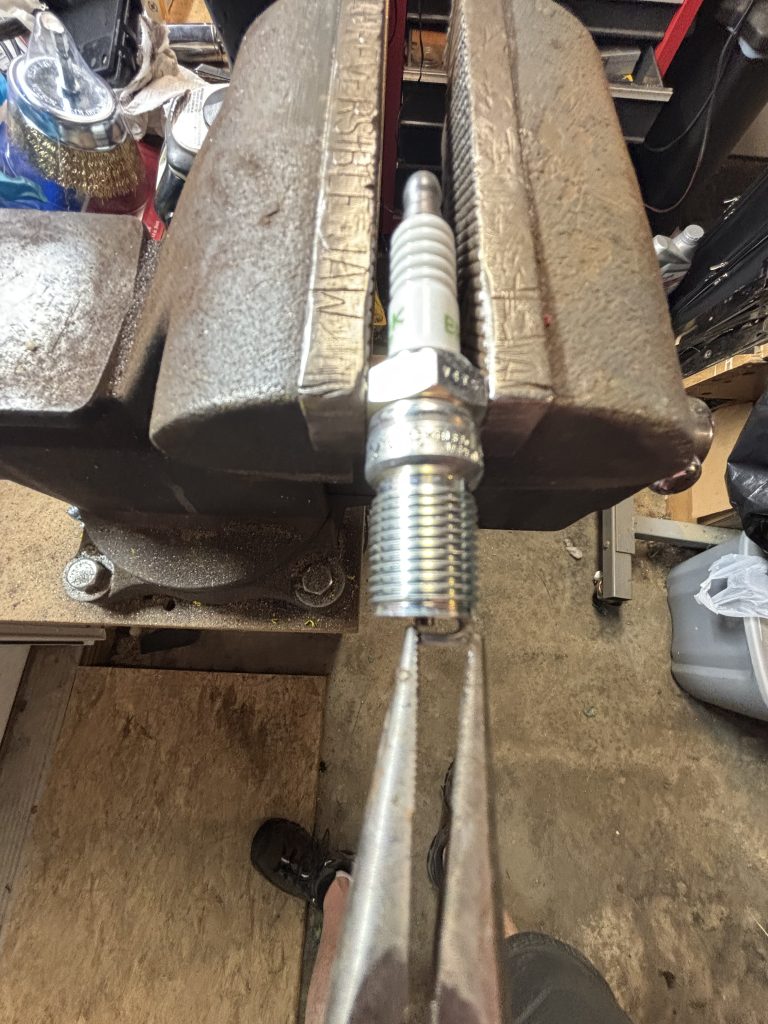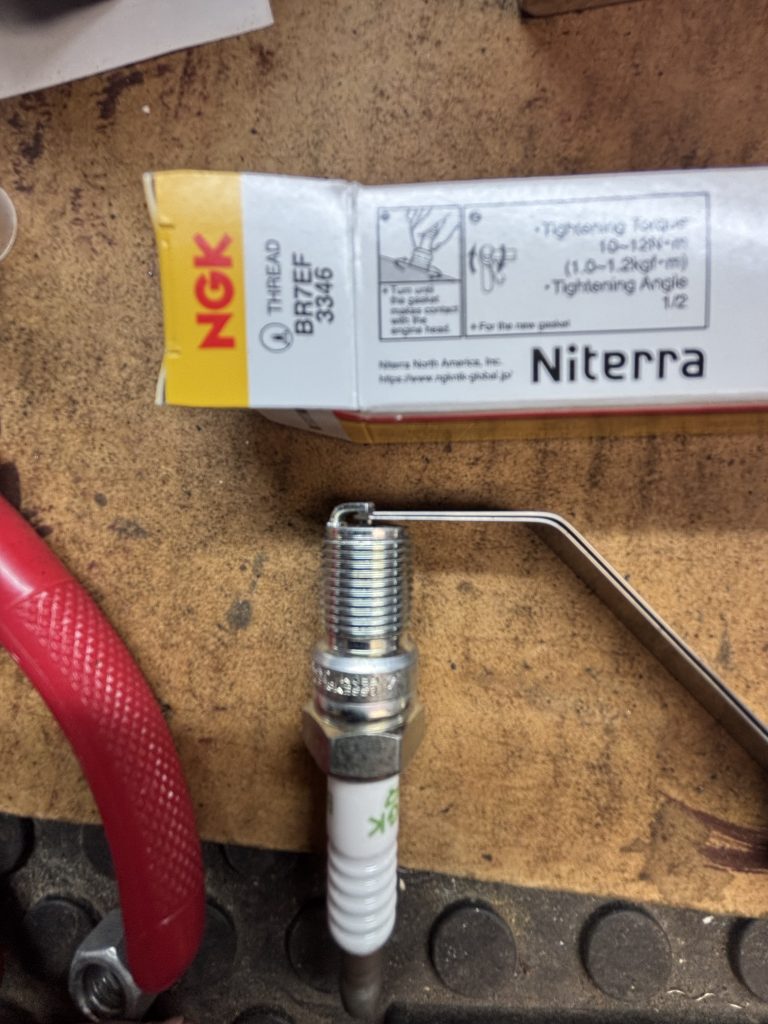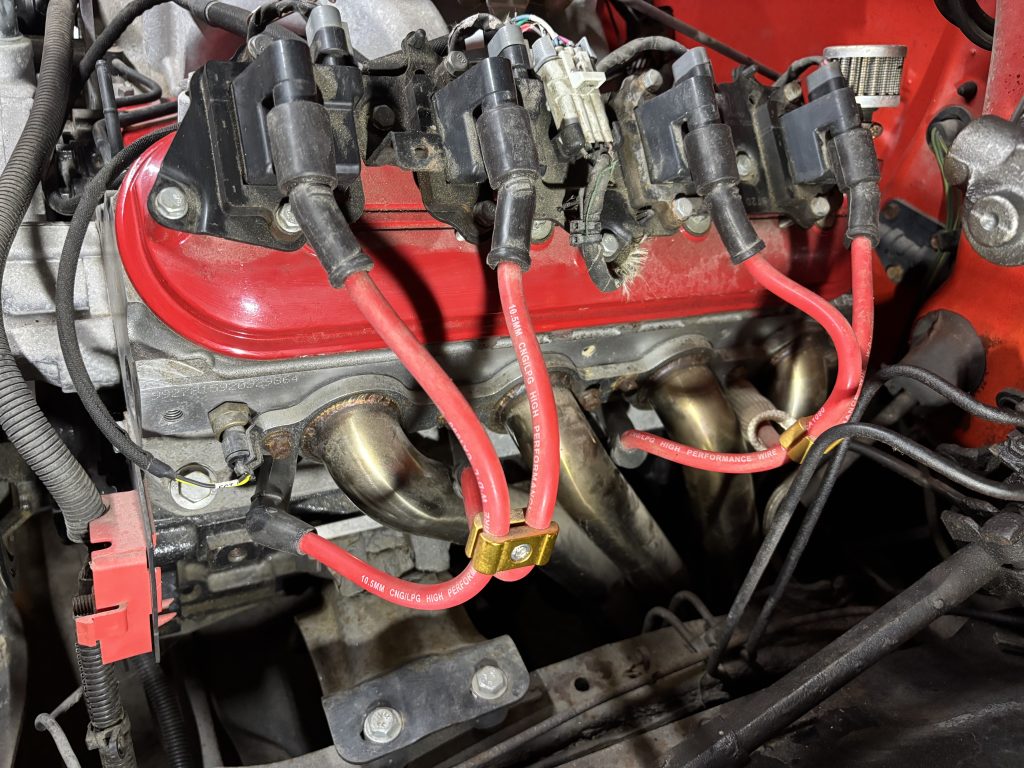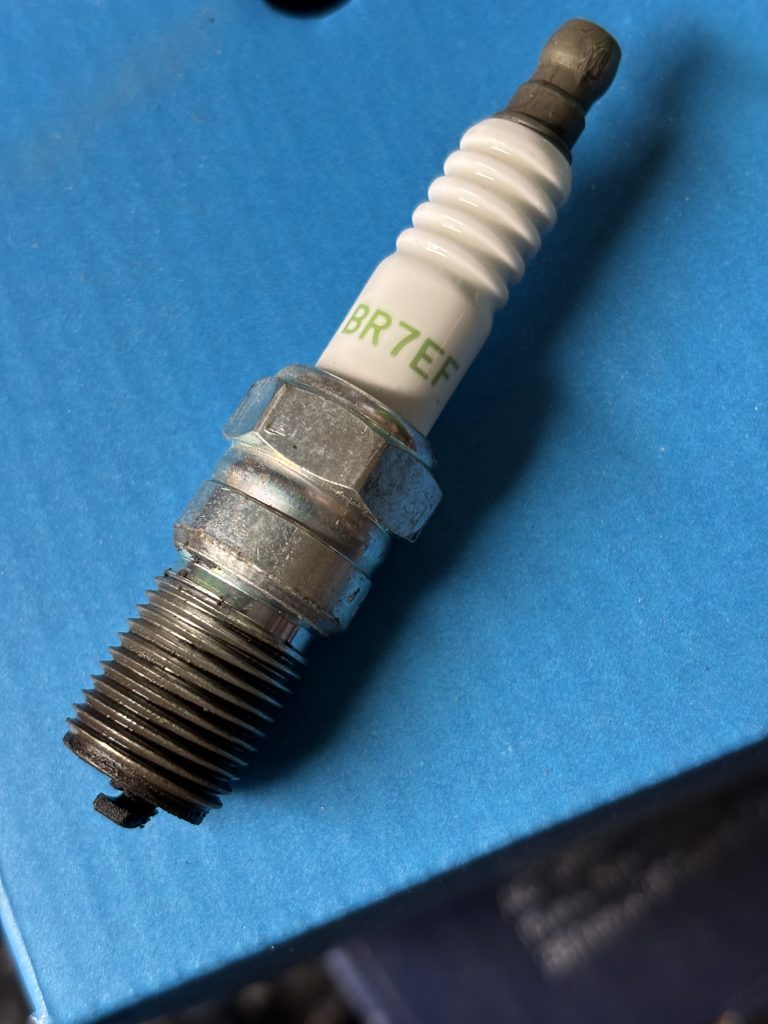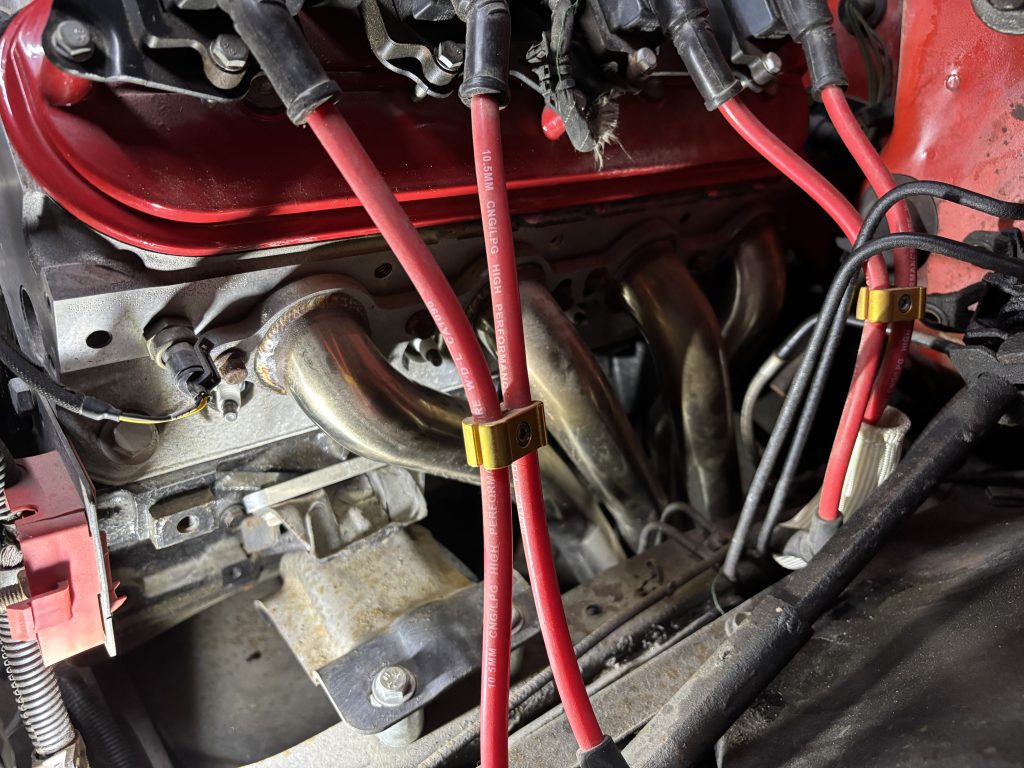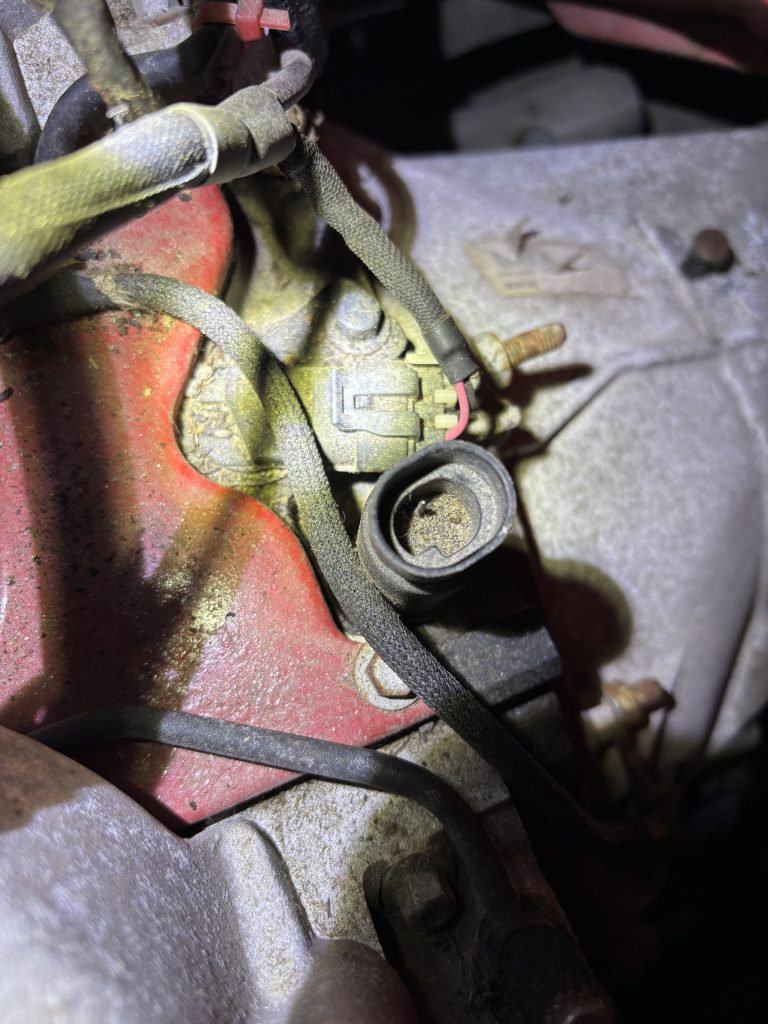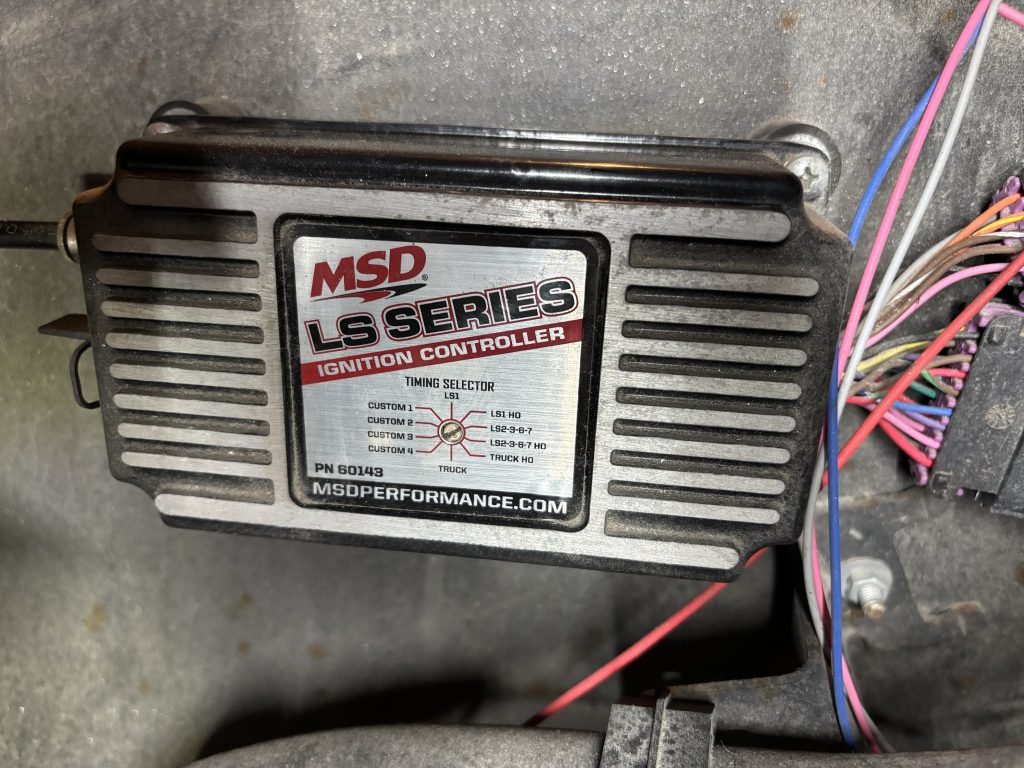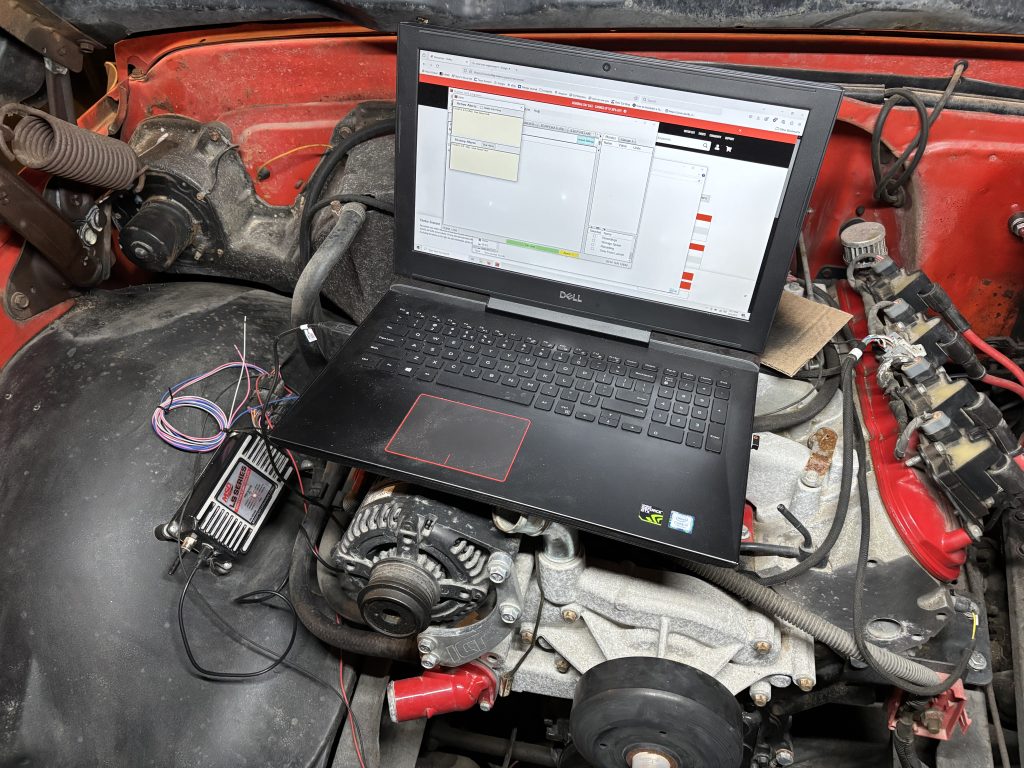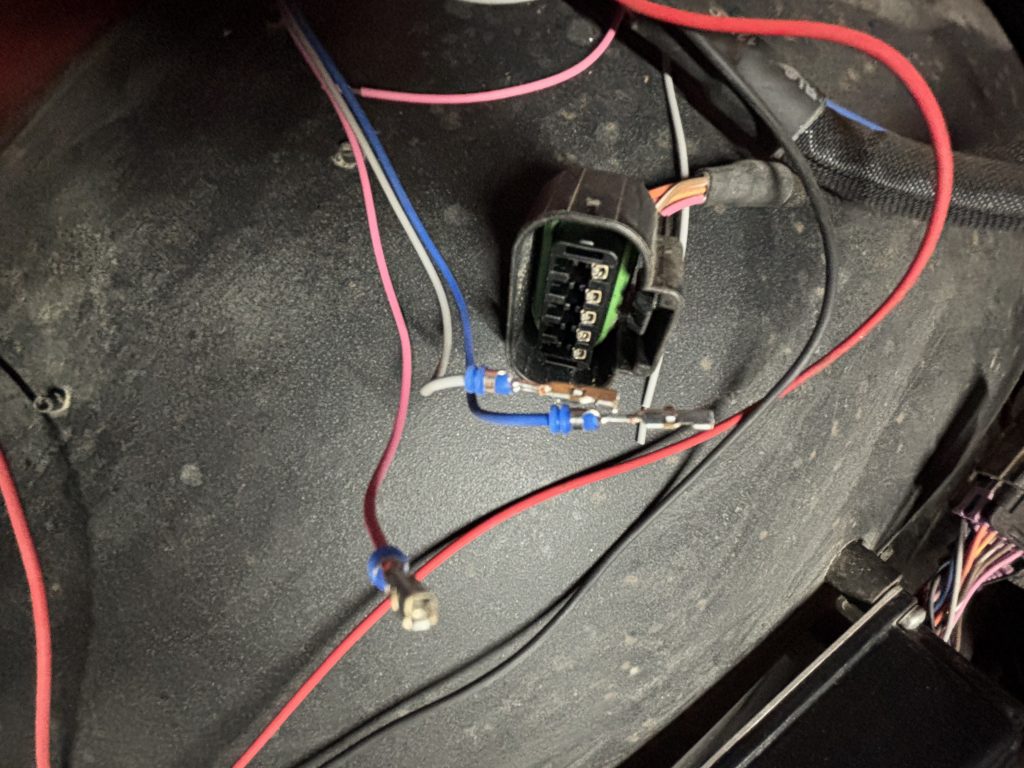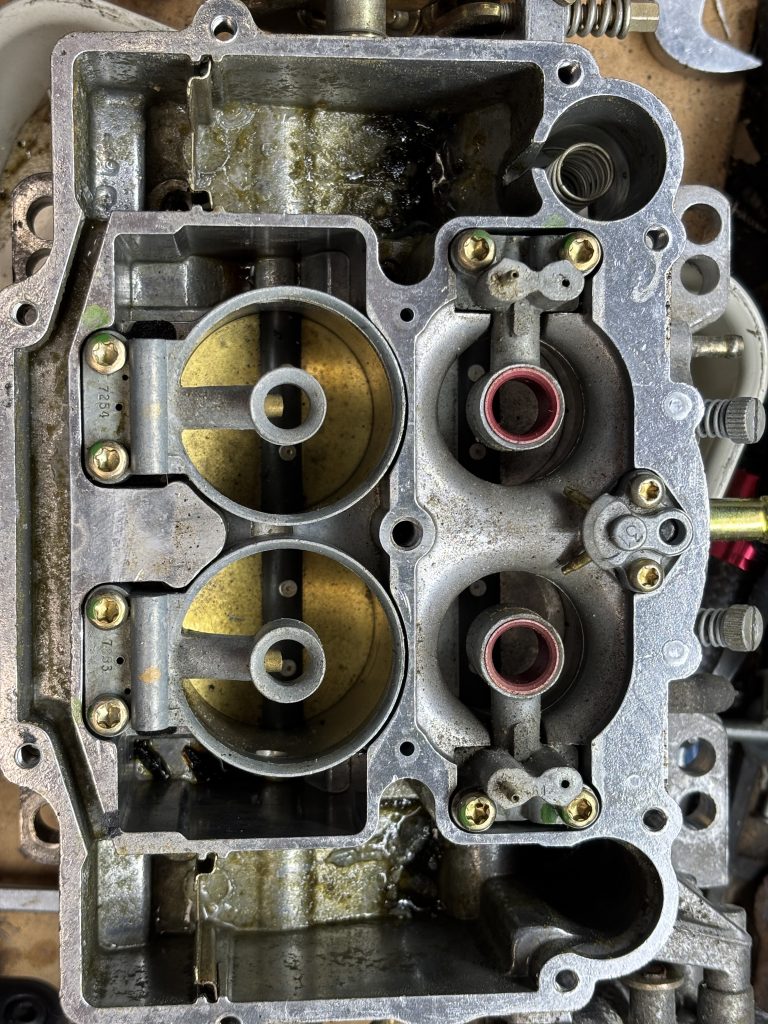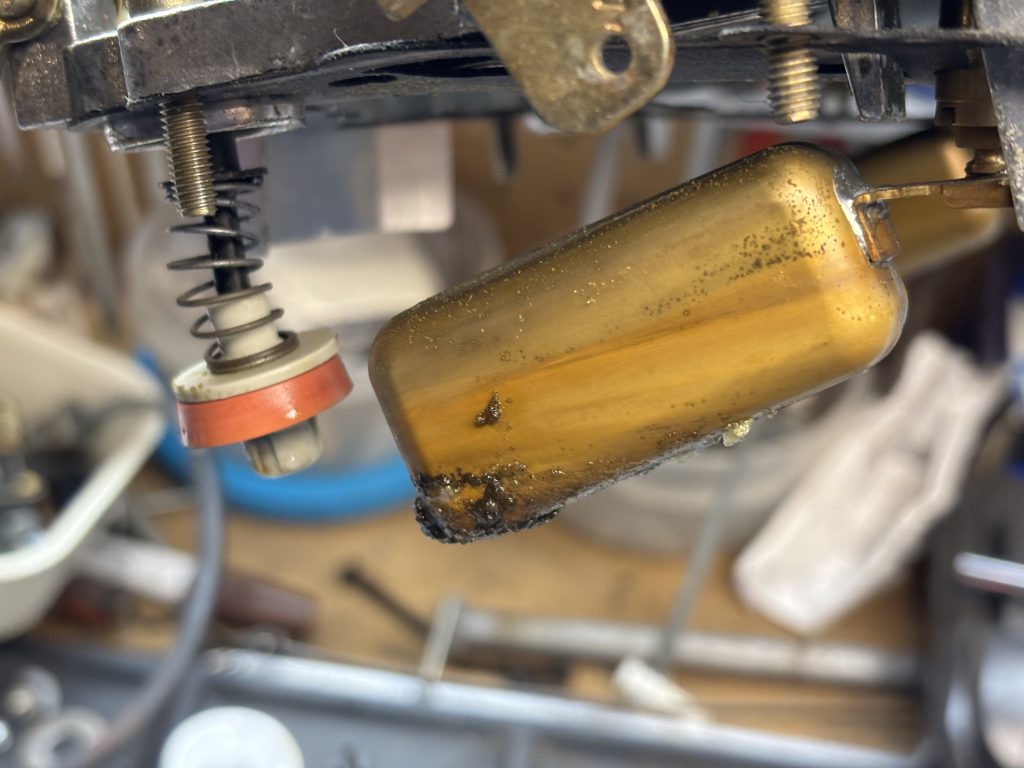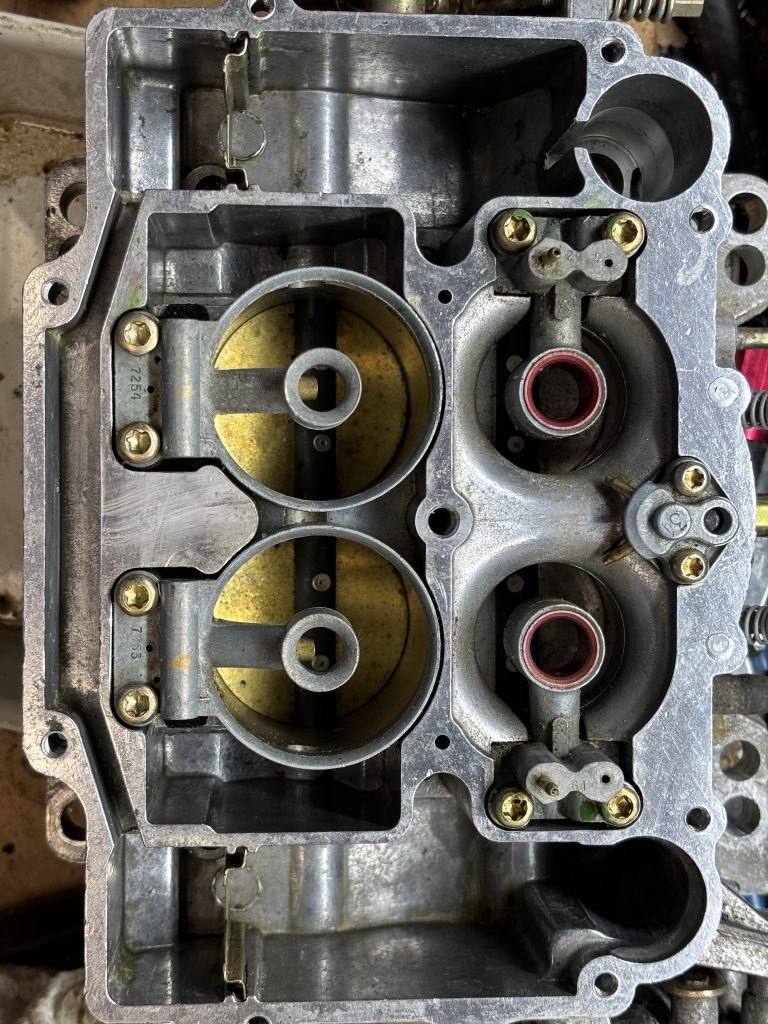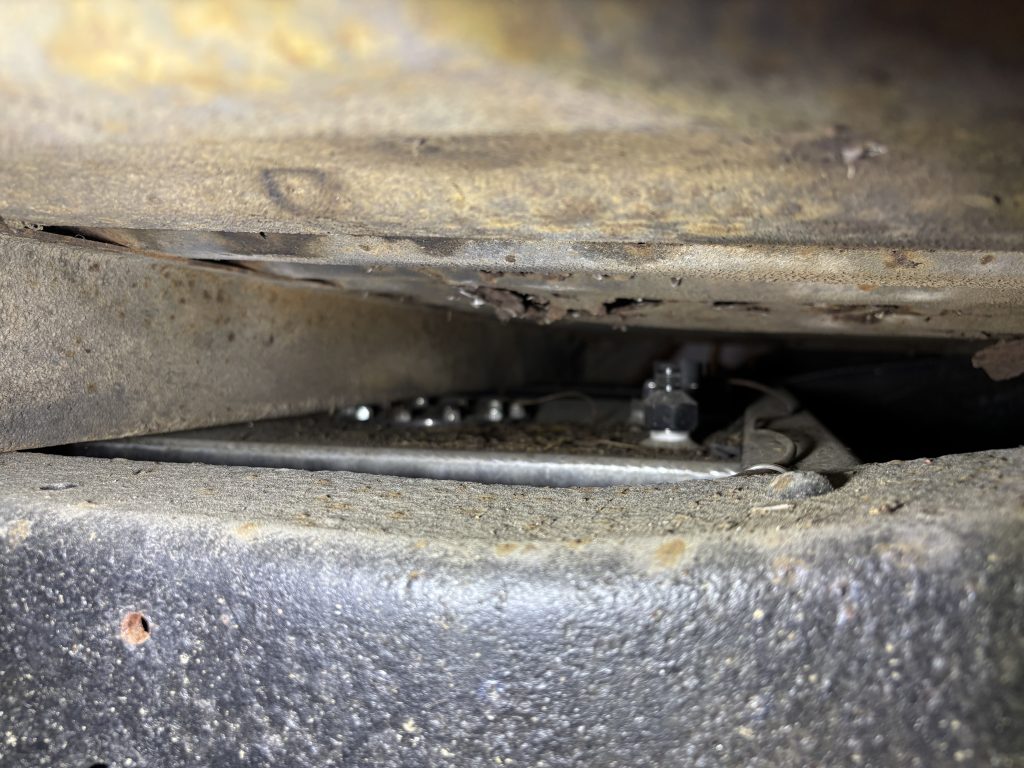
The previous owner disconnected the stock tank behind the seat, and installed a fuel cell at the rear of the frame, where the spare tire was originally. This is a generic tank, probably 15 gallons, with tabs on the lower corners to mount it. There is all-thread holding the tank up to the frame crossmembers. This was done before the PO purchased a bed for the truck, so everything was added and plumbed before the bed was put on the truck. This created a problem because there was no access to the fill cap with the bed installed on the truck.
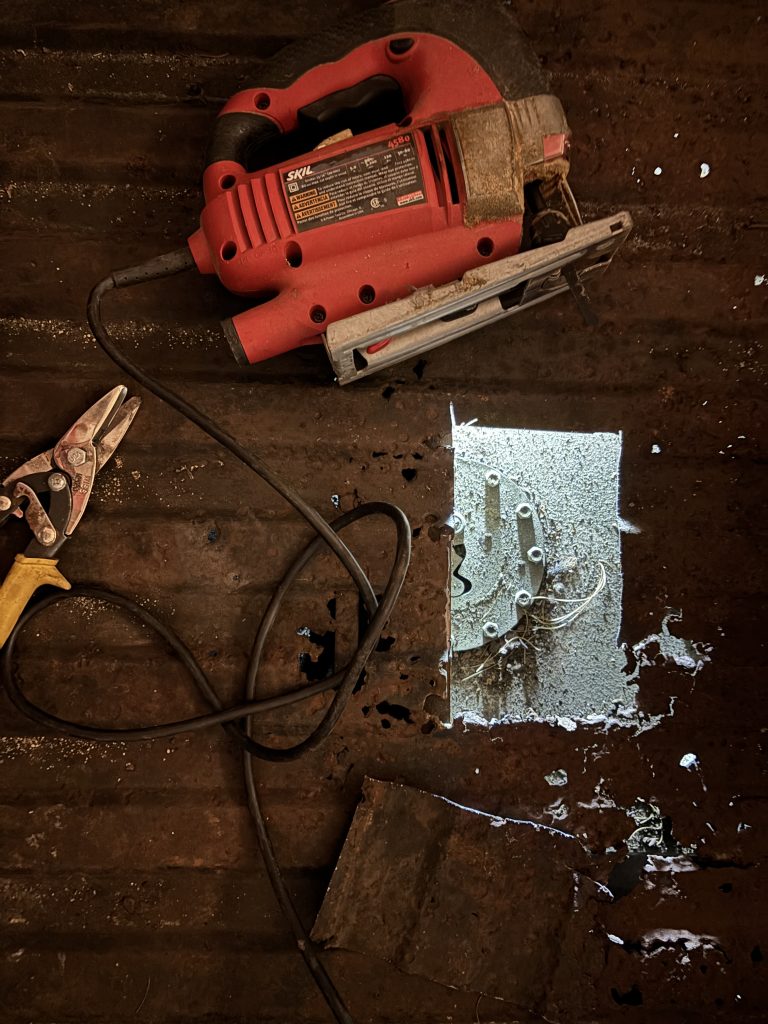
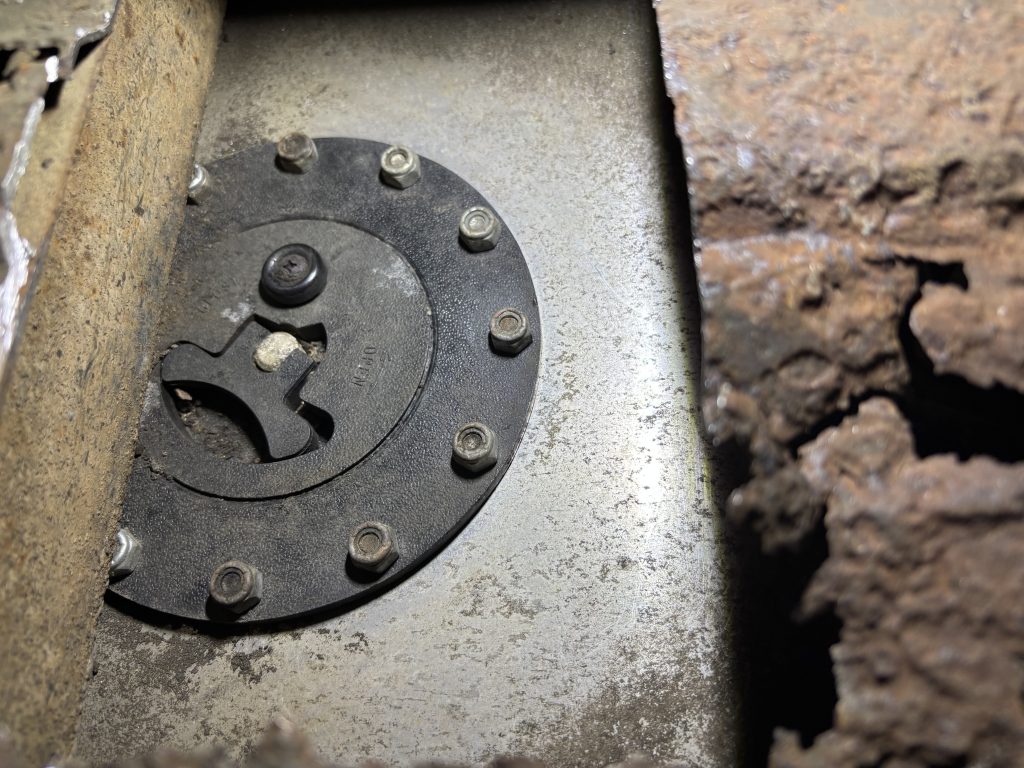
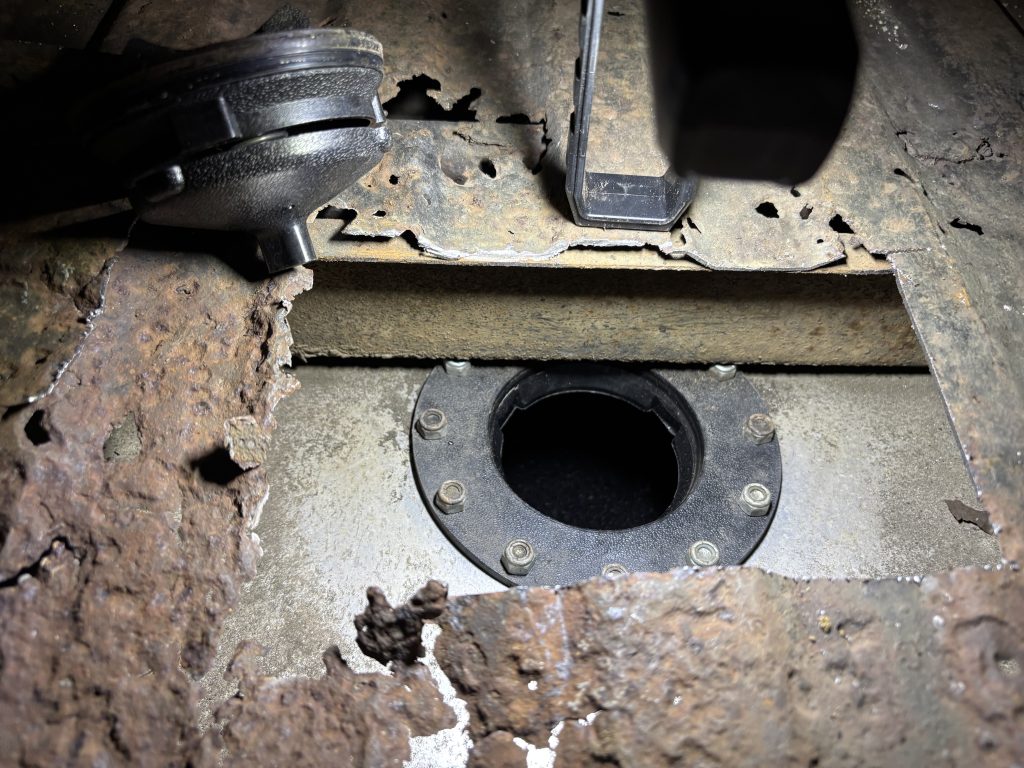
I cut a hole in the bed (which is horribly rusty, so it was no big deal to have a hole there) to find that the crossmember for the bed was blocking access to the fill cap. Luckily (?) the bed is resting on the nuts holding the fill assembly on the tank, which gave it just barely enough room for the cap to be removed. This has to be fixed at some point, but I can work with it this way for now.
I drained the old fuel in the tank, which had a bunch of jelly and water in it. I also flushed out the fuel line from the tank to the carburetor
